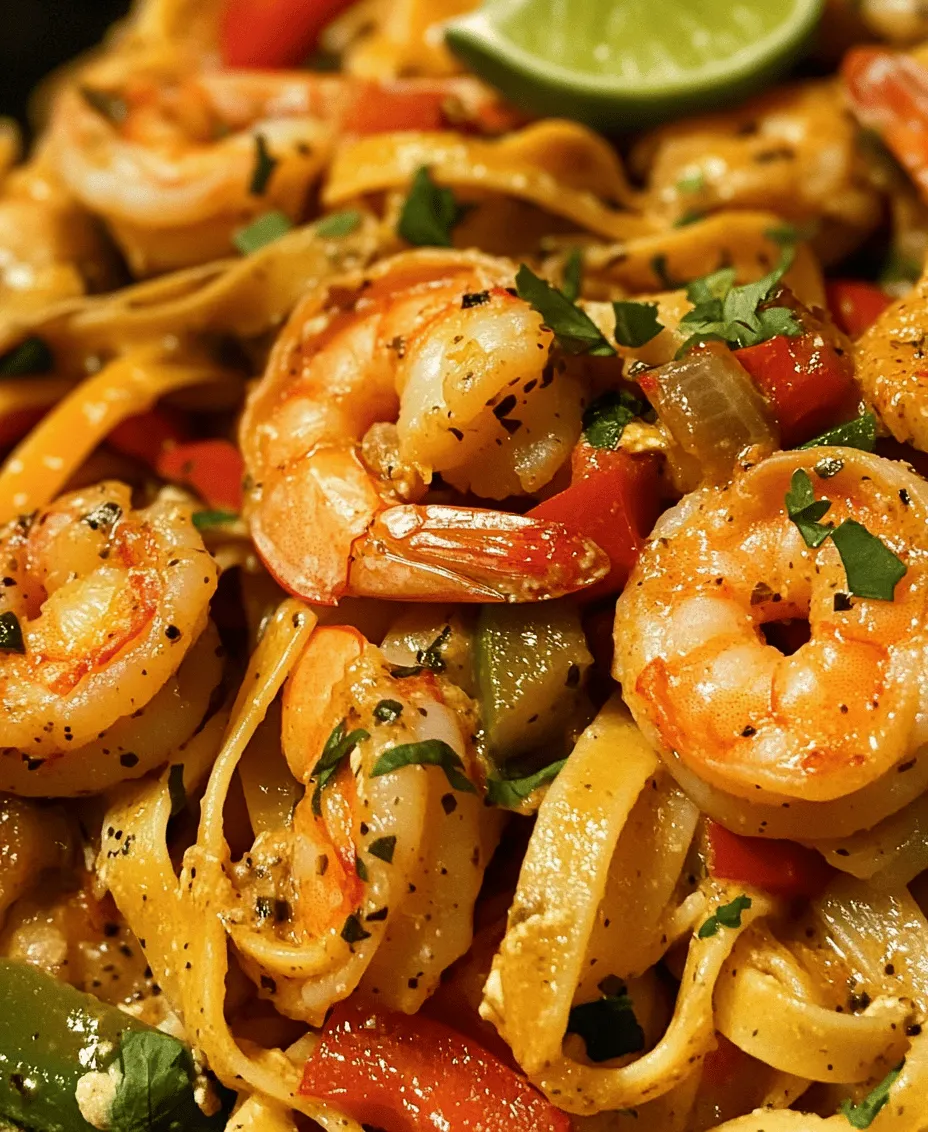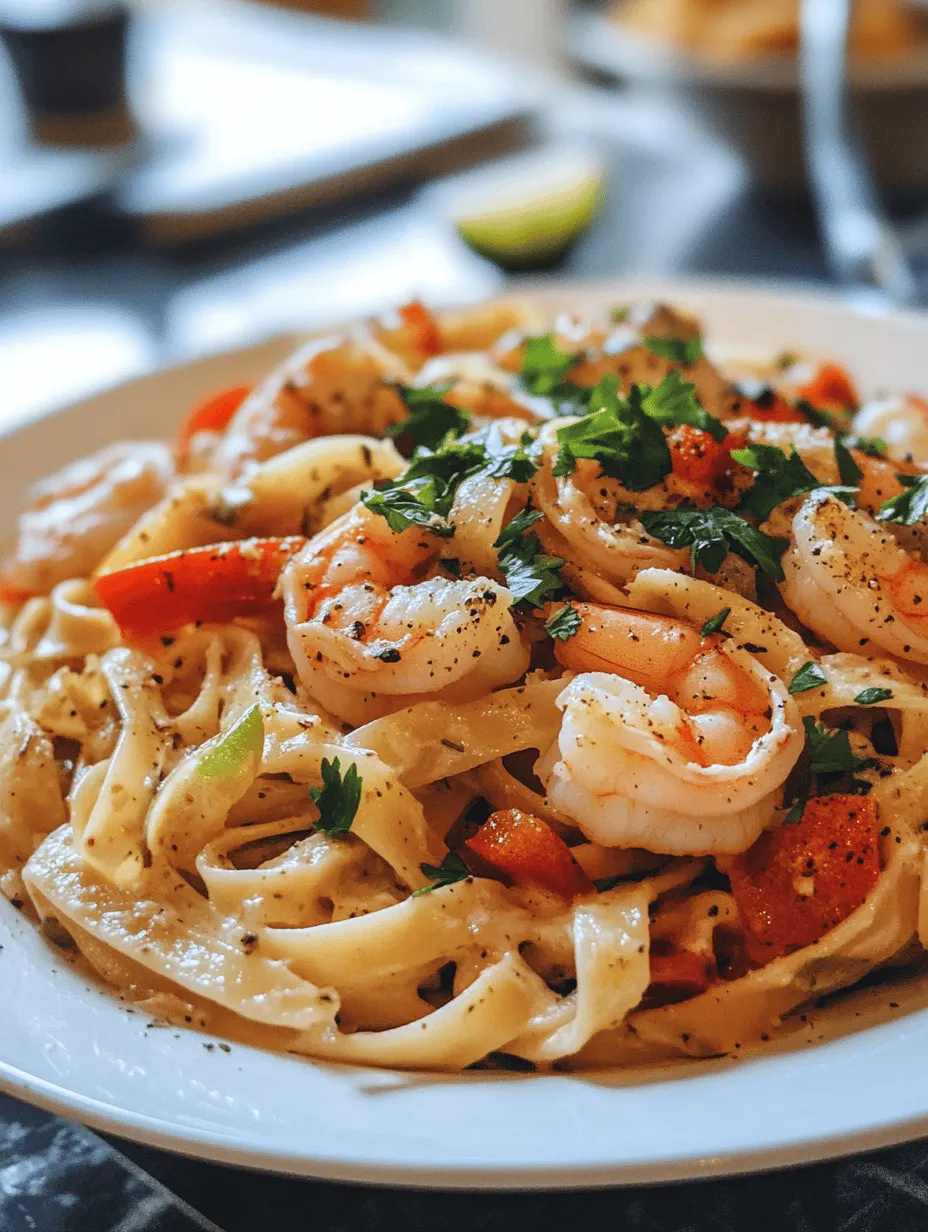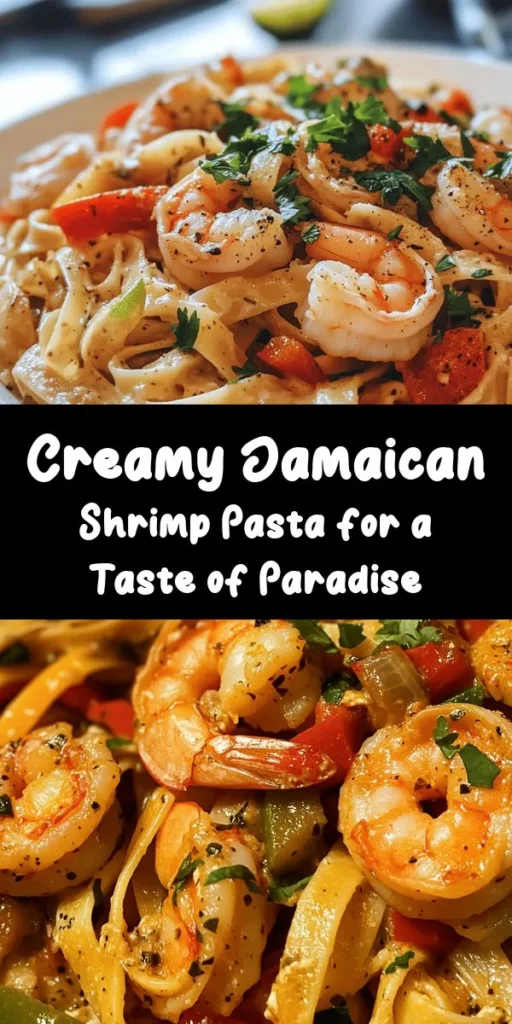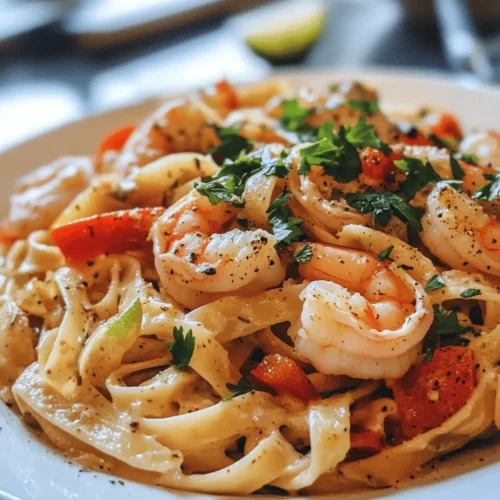Introduction
Jamaican cuisine is a vibrant tapestry of flavors, colors, and textures that reflect the island’s rich cultural heritage and natural bounty. It is renowned for its bold seasonings and the use of fresh, local ingredients. From jerk chicken to ackee and saltfish, Jamaican dishes often embody a unique blend of African, Spanish, British, and Indian influences, making the food an exciting exploration of taste. Among its many culinary treasures, Jamaican Shrimp Pasta stands out as a delightful fusion of Caribbean and Italian traditions, merging the best of both worlds into one creamy, savory dish.
This recipe for Jamaican Shrimp Pasta is a seafood lover’s dream, combining succulent shrimp with a luscious, creamy sauce that has been infused with the vibrant flavors characteristic of Jamaican cooking. With its rich coconut milk base and a medley of spices, this dish promises not only a satisfying meal but also a taste of the tropics right in your kitchen. Perfect for a weeknight dinner or a special occasion, this pasta is both comforting and indulgent, making it a crowd-pleaser for family and friends alike.
Exploring the Ingredients
To create an authentic and flavorful Jamaican Shrimp Pasta, understanding the role of each ingredient is key. Here’s a closer look at the essential components that come together to make this dish a creamy delight.
Pasta Options: Fettuccine vs. Penne
When choosing the perfect pasta for this recipe, you have a couple of great options: fettuccine or penne. Fettuccine, with its wide ribbons, offers a satisfying chew that pairs well with the creamy sauce, allowing each bite to capture the flavors beautifully. On the other hand, penne, with its tubular shape, provides a delightful texture that holds the sauce, ensuring that you get a burst of flavor in every forkful. Ultimately, the choice between these two pasta types comes down to personal preference, but either option will create a delicious dish.
Fresh Shrimp: Importance of Using Large, Peeled, and Deveined Shrimp
The star of the show in Jamaican Shrimp Pasta is, of course, the shrimp. For the best results, it’s essential to use large, peeled, and deveined shrimp. Large shrimp not only add a visually appealing element to the dish but also provide a satisfying bite. They should be fresh or, if using frozen, properly thawed before cooking. The sweetness of the shrimp shines through when sautéed, making them a delectable contrast to the creamy sauce.
Aromatics and Vegetables
Aromatic vegetables are critical to developing the base flavor of the sauce. Garlic, onions, and bell peppers are the key players in this recipe. Garlic adds a fragrant depth, onions provide sweetness, and bell peppers introduce a subtle crunch. Together, these aromatics create a flavorful foundation upon which the rest of the dish is built.
– Garlic: Freshly minced garlic enhances the overall flavor profile, infusing the dish with its distinctive aroma.
– Onions: Sautéed until translucent, onions contribute a mild sweetness that balances the dish’s spicy elements.
– Bell Peppers: Adding color and texture, bell peppers lighten the dish and provide an additional layer of flavor.
Herbs and Spices
The magic of Jamaican cuisine lies in its use of herbs and spices, which elevate the dish to new heights. In this pasta recipe, we will use thyme, allspice, paprika, and cayenne pepper to create a harmonious blend of flavors.
– Thyme: A fragrant herb that adds an earthy note, thyme is a staple in Caribbean cooking and complements the shrimp beautifully.
– Allspice: Known for its warm, aromatic flavor, allspice adds complexity to the dish and is a defining characteristic of Jamaican cuisine.
– Paprika: This spice not only adds a rich color but also a mild sweetness that enhances the overall taste.
– Cayenne Pepper: For those who enjoy a bit of heat, cayenne pepper adds a spicy kick that can be adjusted according to personal preference.
Creamy Base
To achieve the signature creamy texture of this pasta, we will utilize both coconut milk and heavy cream.
– Coconut Milk: This ingredient brings a tropical flair and a subtle sweetness, making it a perfect match for the shrimp and spices. It also contributes to the dish’s creaminess without being overly heavy.
– Heavy Cream: Adding richness, heavy cream balances the coconut milk and enhances the sauce’s velvety texture.
Acidity and Freshness
To ensure a well-rounded flavor profile, lime juice plays a crucial role in balancing the creaminess of the dish. The acidity from lime juice brightens the overall taste, cutting through the richness of the sauce and adding a refreshing element that elevates each bite.
Garnishes
Finally, to finish off the dish, consider garnishing with fresh cilantro and, if desired, a sprinkle of Parmesan cheese.
– Fresh Cilantro: This herb brings a burst of freshness and a hint of earthiness, making it an ideal topping for the pasta.
– Parmesan Cheese: While not traditionally Jamaican, a light dusting of Parmesan can enhance the dish’s flavor, adding a savory depth that complements the creamy sauce.
Step-by-Step Cooking Instructions
Now that we understand the ingredients, let’s move on to the cooking process that will transform these components into a mouthwatering Jamaican Shrimp Pasta. Follow these detailed steps for a delicious result:
Cooking the Pasta to Al Dente Perfection
1. Boil Water: Start by bringing a large pot of salted water to a rolling boil. The salt is essential for flavoring the pasta as it cooks.
2. Add Pasta: Once the water is boiling, add your choice of pasta (fettuccine or penne) and cook according to the package instructions until it reaches al dente—firm to the bite but cooked through. This typically takes about 8-10 minutes, depending on the type of pasta used.
3. Drain and Reserve: Once cooked, drain the pasta and reserve about a cup of the pasta water. This starchy water will be useful for adjusting the sauce’s consistency later on.
Sautéing Aromatics for Optimal Flavor Extraction
4. Heat Oil: In a large skillet, heat a tablespoon of olive oil over medium heat. Olive oil adds flavor and prevents sticking.
5. Sauté Onions and Garlic: Add chopped onions to the skillet and sauté for 2-3 minutes until they become translucent. Then, add minced garlic and cook for an additional minute, stirring frequently to avoid burning.
Incorporating Vegetables into the Sauté for Texture
6. Add Bell Peppers: Incorporate sliced bell peppers into the skillet and cook for another 2-3 minutes until they soften slightly. This step adds color and texture to the dish.
Seasoning the Shrimp to Enhance Its Natural Sweetness
7. Season the Shrimp: Pat the shrimp dry with paper towels, then season them with salt, pepper, thyme, paprika, and cayenne pepper. This will enhance their natural sweetness and infuse them with flavor.
8. Cook the Shrimp: Push the sautéed vegetables to one side of the skillet and add the seasoned shrimp. Cook for about 2-3 minutes on each side until they turn pink and opaque. Be careful not to overcook the shrimp, as they can become tough.
Creating the Creamy Sauce and Adjusting Thickness
9. Add Coconut Milk and Heavy Cream: Pour in the coconut milk and heavy cream, stirring to combine with the shrimp and vegetables. Bring the mixture to a gentle simmer, allowing the flavors to meld together.
10. Adjust Thickness: If the sauce is too thick, gradually add some reserved pasta water until you reach your desired consistency. The starch from the pasta water will help bind the sauce, creating a creamy coating for the pasta.
Combining Pasta with the Sauce and Adding Lime Juice for Brightness
11. Combine Pasta and Sauce: Add the cooked pasta to the skillet, tossing it gently in the creamy sauce until fully coated.
12. Add Lime Juice: Squeeze fresh lime juice over the pasta and give it a final toss. This will brighten the flavors and enhance the overall dish.
With these steps complete, you’ll have a delicious Jamaican Shrimp Pasta that beautifully embodies the essence of Caribbean cuisine. Stay tuned for more tips and tricks to elevate your recipe and common questions that may help you perfect your cooking skills!




